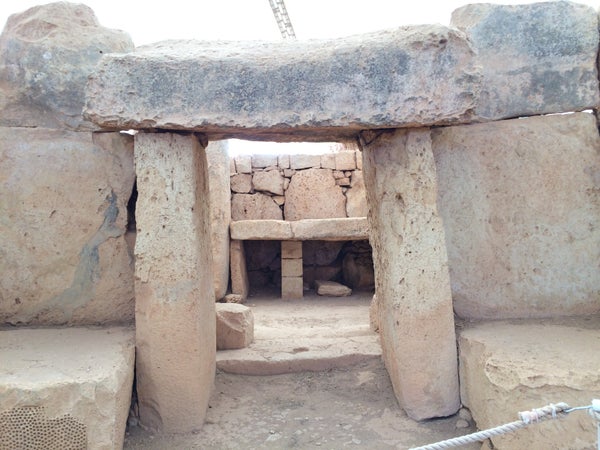This article was published in Scientific American’s former blog network and reflects the views of the author, not necessarily those of Scientific American
It’s Pi Day again! I used to feel a profound disconnect with this holiday, but over the years since I started writing about math, I’ve grudgingly started to appreciate it as an opportunity to learn or write about math I wouldn’t have otherwise. I’m sure you can find a pie to eat or a digit reciting contest to partake in, but I think a better way to celebrate the circle constant is by learning something new.
In 1897, the Indiana legislature famously tried to decree that π was 3.2. In fact, this was part of a bill that claimed to square the circle; the revised value of π was only collateral damage. Squaring the circle is a millennia-old problem in mathematics that asks whether it’s possible to construct a square that has the same area as a given circle using only a compass and straightedge. It was proved impossible in 1882, but word apparently hadn’t reached the Indiana legislature yet.
But perhaps we’re being a little too hard on Indiana and Edward J. Goodwin, the hapless math enthusiast whose square-circling led to the widely-ridiculed bill. As Kelsey Houston-Edwards explains in this excellent video, π isn’t always 3.14159…. If you measure distance differently, your circles will look different, and you’ll get a different circle constant.
On supporting science journalism
If you're enjoying this article, consider supporting our award-winning journalism by subscribing. By purchasing a subscription you are helping to ensure the future of impactful stories about the discoveries and ideas shaping our world today.
James Propp also writes about these and other alternative π’s in his most recent post. Maybe Goodwin just neglected to note that he was using the Lp metric for p=2.1 or something. (I haven’t crunched the numbers, so the precise value of p is left as an exercise for the reader.) Of course, that would require us to believe he was trying to square the circle using a pretty unconventional compass and ruler. If so, I’m even more impressed. But dude, you’ve got to show your work!
Looking at π's in different Lp metrics has a nice bonus: any number between 3 and 4 is π in some Lp space, so you can celebrate Pi Day on any day in March.
If Lp metrics aren’t your thing, I’ve written a few nice posts for π and Pi Day, if I do say so myself.
In 2012, I wondered exactly how many digits of π we need in order to build buildings or fly to outer space. The answer: a lot fewer than the winner of your local π digit recitation contest knows!
In 2013, feeling rather curmudgeonly, I wrote a link roundup of all the ways other people were celebrating the holiday I was attempting to ignore.
In 2014, I wrote about a different π, the prime counting function. Pi Day doesn’t just have to be about geometry! That function is lurking behind the scenes of an article I wrote last year about a weird anti-sameness bias in the last digits of prime numbers. That article led me down a rabbit hole to the Hardy-Littlewood conjectures, two reasonable-sounding statements in number theory that just can’t both be true.
In 2015, the “Pi Day of the century,” I gorged myself on continued fractions, an objectively better way of writing numbers than the decimal system, and wrote the Pi Day Link Roundup of the Century.
Finally, π can get spooky. One year for Halloween, I wrote about something that scares me: higher homotopy groups, denoted πn.
Whatever you mathematical preferences, I hope you find something new to sink your teeth into this Pi Day and the rest of Pi Month.
